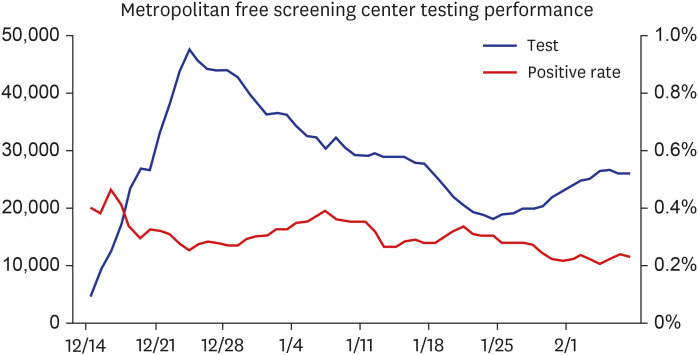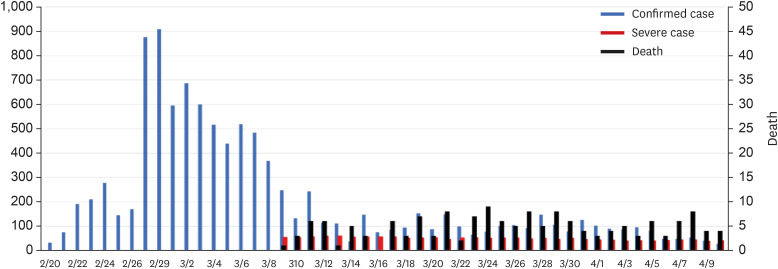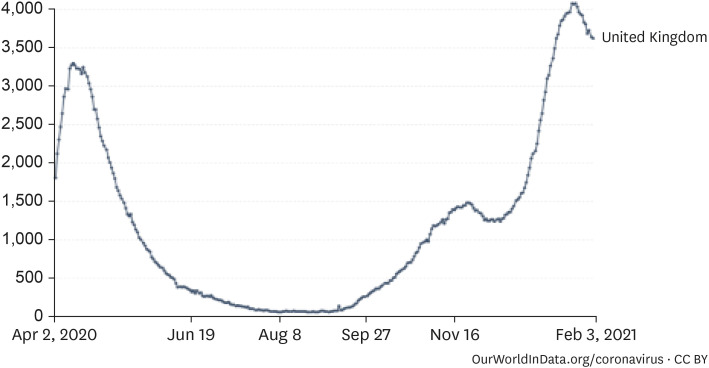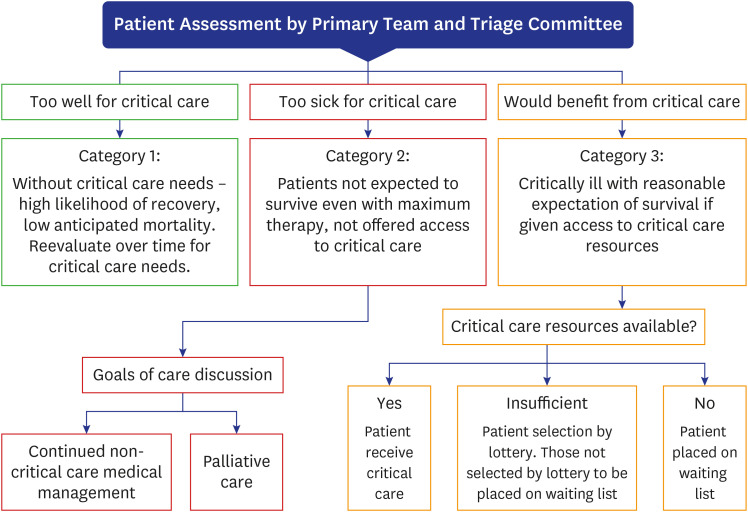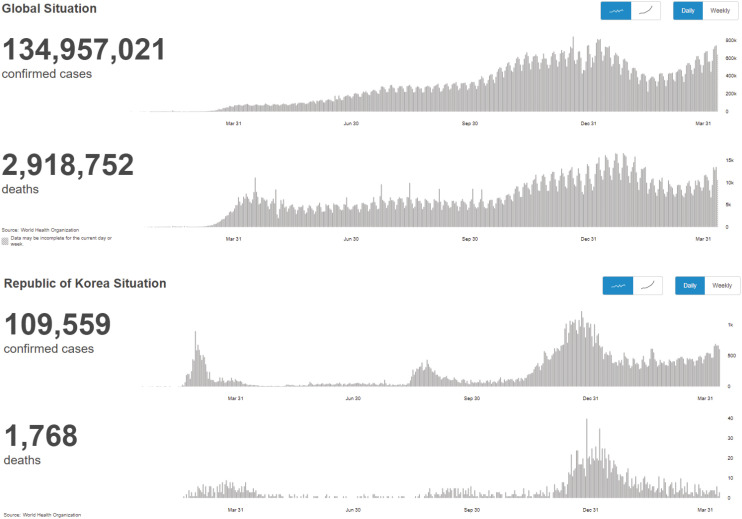J Korean Med Sci.
2021 Oct;36(41):e287. 10.3346/jkms.2021.36.e287.
National Academy of Medicine of Korea (NAMOK) Key Statements on COVID-19
- Affiliations
-
- 1Department of Infectious Diseases, Daejeon Eulji Medical Center, Eulji University, Daejeon, Korea
- 2Department of Preventive Medicine, Graduate Program in System Health Science and Engineering, Ehwa University College of Medicine, Seoul, Korea
- 3Department of Psychiatry, Seoul National University College of Medicine, Seoul, Korea
- 4GreenCross Company, Yongin, Korea
- 5Korea Research Institute of Chemical Technology, Daejeon, Korea
- 6Department of Infectious Diseases, Yonsei University College of Medicine, Seoul, Korea
- 7Division of Infectious Diseases, Samsung Medical Center, Sungkyunkwan University School of Medicine, Seoul, Korea
- 8Seoul Clinical Laboratories Academy, Yongin, Korea
- 9Department of Family Medicine, Seoul National University College of Medicine, Seoul, Korea
- 10DONG-A ILBO Newspaper, Seoul, Korea
- 11Department of Physiology, Korea University College of Medicine, Seoul, Korea
- 12Department of Anesthesiology, Catholic University of Korea College of Medicine, Seoul, Korea
- 13Department of Preventive Medicine, Seoul National University College of Medicine, Seoul, Korea
- 14Department of Radiology, University of Ulsan College of Medicine, Ulsan, Korea
- 15Department of Microbiology and Immunology, Seoul National University College of Medicine, Seoul, Korea
- 16Department of Infectious Diseases, Uijeongbu Eulji Medical Center, Eulji University, Uijeongbu, Korea
- KMID: 2521468
- DOI: http://doi.org/10.3346/jkms.2021.36.e287
Figure
Cited by 1 articles
-
Impact of COVID-19 on Clinicopathological Spectrum of Pityriasis Rosea in Korea
Dai Hyun Kim, Jun Hyuk Cho, Sung Jin Park, Soo Hong Seo, Hyo Hyun Ahn
J Korean Med Sci. 2022;37(24):e190. doi: 10.3346/jkms.2022.37.e190.
Reference
-
1. Korean Society for Laboratory Medicine. Updated 2021. Accessed August 5, 2021. https://www.kslm.org/popup/popup_201222_02.html.2. Kohmer N, Toptan T, Pallas C, Karaca O, Pfeiffer A, Westhaus S, et al. The comparative clinical performance of four SARS-CoV-2 rapid antigen tests and their correlation to infectivity in vitro. J Clin Med. 2021; 10(2):328. PMID: 33477365.
Article3. World Health Organization. Antigen-detection in the Diagnosis of SARS-CoV-2 Infection Using Rapid Immunoassays. Geneva, Switzerland: WHO;2020.4. European Centre for Disease Prevention and Control. Options for the Use of Rapid Antigen Tests for COVID-19 in the EU/EEA and the UK. 19 November 2020. Stockholm, Sweden: ECDC;2020.5. Barat B, Das S, De Giorgi V, Henderson DK, Kopka S, Lau AF, et al. Pooled saliva specimens for SARS-CoV-2 testing. J Clin Microbiol. 2021; 59(3):e02486–e02420. PMID: 33262219.
Article6. The Korean Society for Laboratory Medicine COVID-19 Response Task Force, Korea Disease Control and Prevention Agency Infectious Disease Diagnosis and Analysis Bureau. Guidelines for the Laboratory Diagnosis of COVID-19 in Korea. Vol. 4. Updated 2020. Accessed August 5, 2021. https://www.kslm.org/.7. Kim SY, Lee J, Sung H, Lee H, Han MG, Yoo CK, et al. Pooling upper respiratory specimens for rapid mass screening of COVID-19 by real-time RT-PCR. Emerg Infect Dis. 2020; 26(10):2469–2472. PMID: 32844739.
Article8. National Academy of Medicine of Korea and The Korean Federation of Science and Technology Societies 16th Online Joint Forum. COVID-19 diagnosis test for successful K quarantine. December 22, 2020. Updated 2020. Accessed August 5, 2021. https://youtu.be/MucEP9Iqx6Q.9. Korea Disease Control and Prevention Agency. Final judgment of false-positive results for 3 suspected cases of COVID-19 in Gwangju and Chungnam. Updated 2020. Accessed August 5, 2021. https://kdca.go.kr/board/board.es?mid=a20501000000&bid=0015&list_no=367517&cg_code=&act=view&nPage=1.10. The New York Times. C.D.C. warns the new virus variant could fuel huge spikes in Covid-19 cases. Updated 2021. Accessed August 5, 2021. https://www.nytimes.com/2021/01/15/health/covid-cdc-variant.html.11. Nextstrain. Genomic epidemiology of novel coronavirus - Global subsampling. Updated 2021. Accessed September 2, 2021. https://nextstrain.org/ncov/global.12. GISAID. GISAID comments on the discussion of different types or clades of the hCoV-19 virus and their origin. Updated 2020. Accessed February 21, 2021. https://www.gisaid.org/references/statements-clarifications/different-types-or-clades-of-the-virus-and-their-origin/#c501.13. Lee H, Lee H, Song KH, Kim ES, Park JS, Jung J, et al. Impact of public health interventions on seasonal influenza activity during the SARS-CoV-2 outbreak in Korea. Clin Infect Dis. 2021; 73(1):e132–e140. PMID: 32472687.14. Chang L, Yan Y, Wang L. Coronavirus disease 2019: coronaviruses and blood safety. Transfus Med Rev. 2020; 34(2):75–80. PMID: 32107119.
Article15. Hussein HA, Hassan RYA, Chino M, Febbraio F. Point-of-care diagnostics of COVID-19: From current work to future perspectives. Sensors (Basel). 2020; 20(15):4289.
Article16. Korea Disease Control and Prevention Agency. Starting the Development of New Coronavirus Analysis and Inspection Methods. Cheongju, Korea: Korea Disease Control and Prevention Agency;2020.17. Hoffmann M, Kleine-Weber H, Pöhlmann S. A multibasic cleavage site in the spike protein of SARS-CoV-2 is essential for infection of human lung cells. Mol Cell. 2020; 78(4):779–784.e5. PMID: 32362314.
Article18. Kissler SM, Tedijanto C, Goldstein E, Grad YH, Lipsitch M. Projecting the transmission dynamics of SARS-CoV-2 through the postpandemic period. Science. 2020; 368(6493):860–868. PMID: 32291278.
Article19. Kim D, Lee JY, Yang JS, Kim JW, Kim VN, Chang H. The architecture of SARS-CoV-2 transcriptome. Cell. 2020; 181(4):914–921.e10. PMID: 32330414.
Article20. Heo JY. Clinical and epidemiological characteristics of coronavirus disease 2019 in the early stage of outbreak. Korean J Med. 2020; 95(2):67–73.
Article21. National Academy of Medicine of Korea and The Korean Federation of Science and Technology Societies 4th Online Joint Forum. How far has COVID-19 therapeutic and vaccine development progressed? April 17, 2020. Updated 2020. Accessed March 2, 2021. https://www.youtube.com/watch?v=1XgnQUcWIts.22. National Academy of Medicine of Korea and The Korean Federation of Science and Technology Societies 10th Online Joint Forum. Current status on the development of COVID-19 therapeutics. September 25, 2020. Updated 2020. Accessed March 2, 2021. https://www.youtube.com/watch?v=o_RU75W4xP8.23. World Health Organization. The COVID-19 candidate vaccine landscape and tracker. Updated 2021. Accessed February 21, 2021. https://www.who.int/publications/m/item/draft-landscape-of-covid-19-candidate-vaccines.24. Jung J. Preparing for the coronavirus disease (COVID-19) vaccination: Evidence, plans, and implications. J Korean Med Sci. 2021; 36(7):e59. PMID: 33619920.
Article25. Shimabukuro T, Nair N. Allergic reactions including anaphylaxis after receipt of the first dose of Pfizer-BioNTech COVID-19 vaccine. JAMA. 2021; 325(8):780–781. PMID: 33475702.
Article26. Sung HK, Kim JY, Heo J, Seo H, Jang YS, Kim H, et al. Clinical course and outcomes of 3,060 patients with coronavirus disease 2019 in Korea, January–May 2020. J Korean Med Sci. 2020; 35(30):e280. PMID: 32743995.
Article27. Eurosurveillance Editorial Team. Updated rapid risk assessment from ECDC on the risk related to the spread of new SARS-CoV-2 variants of concern in the EU/EEA - first update. Euro Surveill. 2021; 26(3):2101211.28. National Academy of Medicine of Korea and The Korean Federation of Science and Technology Societies 6th Online Joint Forum. COVID-19 experience in Daegu and Gyeongbuk areas and response plans. June 19, 2020. Updated 2020. Accessed July 19, 2021. https://www.youtube.com/watch?v=Xn6VTRtXOZs&t=133s.29. Emanuel EJ, Persad G, Upshur R, Thome B, Parker M, Glickman A, et al. Fair allocation of scarce medical resources in the time of Covid-19. N Engl J Med. 2020; 382(21):2049–2055. PMID: 32202722.
Article30. Pfefferbaum B, North CS. Mental health and the Covid-19 pandemic. N Engl J Med. 2020; 383(6):510–512. PMID: 32283003.
Article31. Vindegaard N, Benros ME. COVID-19 pandemic and mental health consequences: Systematic review of the current evidence. Brain Behav Immun. 2020; 89:531–542. PMID: 32485289.
Article32. Ma YF, Li W, Deng HB, Wang L, Wang Y, Wang PH, et al. Prevalence of depression and its association with quality of life in clinically stable patients with COVID-19. J Affect Disord. 2020; 275:145–148. PMID: 32658818.
Article33. Rogers JP, Chesney E, Oliver D, Pollak TA, McGuire P, Fusar-Poli P, et al. Psychiatric and neuropsychiatric presentations associated with severe coronavirus infections: a systematic review and meta-analysis with comparison to the COVID-19 pandemic. Lancet Psychiatry. 2020; 7(7):611–627. PMID: 32437679.
Article34. Chew NW, Lee GK, Tan BY, Jing M, Goh Y, Ngiam NJ, et al. A multinational, multicentre study on the psychological outcomes and associated physical symptoms amongst healthcare workers during COVID-19 outbreak. Brain Behav Immun. 2020; 88:559–565. PMID: 32330593.
Article35. Ettman CK, Abdalla SM, Cohen GH, Sampson L, Vivier PM, Galea S. Prevalence of depression symptoms in US adults before and during the COVID-19 pandemic. JAMA Netw Open. 2020; 3(9):e2019686. PMID: 32876685.
Article36. Wang Y, Shi L, Que J, Lu Q, Liu L, Lu Z, et al. The impact of quarantine on mental health status among general population in China during the COVID-19 pandemic. Mol Psychiatry. Forthcoming. 2021; DOI: 10.1038/s41380-021-01019-y.
Article37. Xiong J, Lipsitz O, Nasri F, Lui LM, Gill H, Phan L, et al. Impact of COVID-19 pandemic on mental health in the general population: a systematic review. J Affect Disord. 2020; 277:55–64. PMID: 32799105.
Article38. Liu CH, Zhang E, Wong GT, Hyun S, Hahm HC. Factors associated with depression, anxiety, and PTSD symptomatology during the COVID-19 pandemic: Clinical implications for U.S. young adult mental health. Psychiatry Res. 2020; 290:113172. PMID: 32512357.
Article39. Nissen JB, Højgaard DR, Thomsen PH. The immediate effect of COVID-19 pandemic on children and adolescents with obsessive compulsive disorder. BMC Psychiatry. 2020; 20(1):511. PMID: 33081741.
Article40. Hao F, Tan W, Jiang L, Zhang L, Zhao X, Zou Y, et al. Do psychiatric patients experience more psychiatric symptoms during COVID-19 pandemic and lockdown? A case-control study with service and research implications for immunopsychiatry. Brain Behav Immun. 2020; 87:100–106. PMID: 32353518.
Article41. El Haj M, Altintas E, Chapelet G, Kapogiannis D, Gallouj K. High depression and anxiety in people with Alzheimer’s disease living in retirement homes during the covid-19 crisis. Psychiatry Res. 2020; 291:113294. PMID: 32763552.
Article42. Lee SW, Yang JM, Moon SY, Yoo IK, Ha EK, Kim SY, et al. Association between mental illness and COVID-19 susceptibility and clinical outcomes in South Korea: a nationwide cohort study. Lancet Psychiatry. 2020; 7(12):1025–1031. PMID: 32950066.
Article43. Jeon HL, Kwon JS, Park SH, Shin JY. Association of mental disorders with SARS-CoV-2 infection and severe health outcomes: nationwide cohort study. Br J Psychiatry. Forthcoming. 2021; DOI: 10.1192/bjp.2020.251.
Article44. World Health Organization. Republic of Korea. Updated 2021. Accessed April 12, 2021. https://covid19.who.int/region/wpro/country/kr.45. World Health Organization. Weekly epidemiological update – 2 March 2021. Updated 2021. Accessed March 5, 2021. https://www.who.int/publications/m/item/weekly-epidemiological-update---2-march-2021.46. Sachs J, Schmidt-Traub G, Kroll C, Lafortune G, Fuller G, Woelm F. The sustainable development goals and COVID-19. Sustainable development report 2020. Updated 2021. Accessed March 8, 2021. https://s3.amazonaws.com/sustainabledevelopment.report/2020/2020_sustainable_development_report.pdf.47. OECD. Flattening the COVID-19 peak: containment and mitigation policies. Updated 2020. Accessed March 8, 2021. https://www.oecd.org/coronavirus/policy-responses/flattening-the-covid-19-peak-containment-and-mitigation-policies-e96a4226.48. The Government of the Republic of Korea. Flattening the curve on COVID-19: How Korea responded to a pandemic using ICT. Updated 2020. Accessed March 8, 2021. http://overseas.mofa.go.kr/gr-en/brd/m_6940/view.do?seq=761548.49. Lee JK, Bullen C, Ben Amor Y, Bush SR, Colombo F, Gaviria A, et al. Institutional and behaviour-change interventions to support COVID-19 public health measures: a review by the Lancet Commission Task Force on public health measures to suppress the pandemic. Int Health. 2021; 13(5):399–409. PMID: 33974687.
Article50. World Health Organization. Communicating and managing uncertainty in the COVID-19 pandemic: a quick guide. Updated 2020. Accessed March 8, 2021. https://www.who.int/docs/default-source/searo/whe/coronavirus19/managing-uncertainty-in-covid-19-a-quick-guide.pdf?sfvrsn=270e4ac8_4.51. Oh J. Roles of insurance for a sustainable society amid disasters. Living with COVID-19 (2020.7.9.). Updated 2020. Accessed March 8, 2021. https://www.youtube.com/watch?v=vUoO5d2GI4w.
- Full Text Links
- Actions
-
Cited
- CITED
-
- Close
- Share
- Similar articles
-
- Assessment and Management of Dysphagia during the COVID-19 Pandemic
- Clinical Practice Experience of Nursing Students in the Context of the COVID-19 Pandemic
- Analysis on the Key Words related to Healthcare Issues of the Prevention and Control of COVID-19 in Major Korean Newspapers, 2020
- The Management of Thyroid Disease in COVID-19 Pandemic
- COVID-19 and Smell Loss


